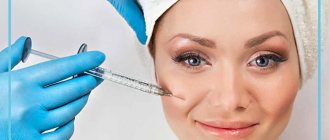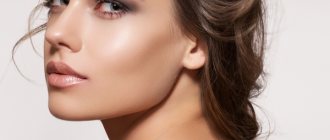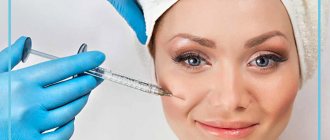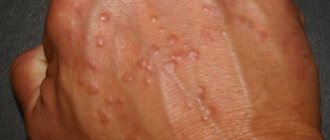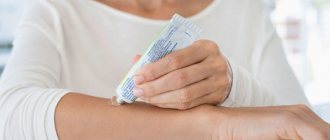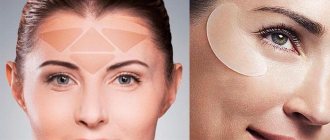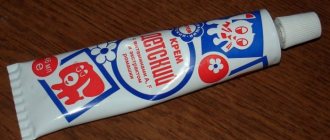On the path to restoring their former beauty and youth, women encounter many procedures and medications. Thus, one of the most popular procedures - the injection of Botox - leaves many patients confused: what is the difference in the use of Botox, Dysport, Xeomin and others? Which one is better/worse, more expensive or cheaper? Let's try to deal with these issues once and for all.
Botulinum toxin type A has been used in cosmetology for several decades. Its task is to eliminate facial wrinkles due to muscle fiber relaxation, as well as correct hyperhidrosis. The toxin blocks neuromuscular transmission, thereby relaxing the muscle.
The most well-known drugs today are the following: Botox, Dysport, Xeomin, Lantox, Relatox. These products are certified and approved for use in the Russian Federation.
We will analyze and compare the composition of the most common botulinum toxins type A, and also try to compare them based on the analysis of this data.
Composition of drugs
Both drugs contain water-soluble protein Albumin (Albuminum humanum) and sodium chloride.
Difference between Botox and Botulax:
- production technology;
- cleaning level;
- auxiliary components;
- dosage;
- price.
Let's look at each tool in more detail.
…
Botox
A classic anti-aging product with botulinum toxin, it has long been successfully used in cosmetology and medicine. Produced by the American company Allergan. World famous, well studied. The effect lasts up to 6-8 months.
Compound:
- purified class A botulinum toxin to suppress muscle impulses and relax muscles;
- Albumin is a protein for tissue repair;
- sodium chloride is a solvent for the ingredients of the drug.
Storage method: at temperatures from -3o to -17o.
…
Botulax
Manufactured by the South Korean company Hugel Inc. The effect lasts up to 4-6 months.
A relaxing antipsychotic with a good effect on facial muscles. The basis of the composition is highly concentrated protein botulinum toxin A. For stabilization, auxiliary ingredients are present. Injections are carried out slowly - foaming may occur if injected quickly.
Compound:
- Category A protein neurotoxin;
- simple water-soluble proteins in whey;
- sodium chloride 0.9%.
The prepared solution is stored for no more than a day at temperatures up to +7o.
Comparative table of botulinum toxin composition
| Type of toxin/characteristics | Botox | Dysport | Xeomin | Lantox | Neuronox | Relatox |
| Units | 100 units | 500 units | 100 units | 50 and 100 units | 100 units | 50 and 100 units |
| Molecular mass | 900 kDa | 500 kDa | 150 kDa | 900 kDa | 900 kDa | 150 kDa |
| Albumen | 500 mcg | 125 mcg | 1 mg | — | 500 mcg | — |
| Excipients | NaCl 900 mcg | Lactose 2.5 mg | Sucrose 4.7 mg | Gelatin 5 mg Dextran 25 mg Sucrose 25 mg | NaCl 900 mcg | Gelatin 6 mg Maltose 12 mg |
Activity units reflect the dosage of drugs. One unit of activity corresponds to the average lethal dose (LD50) for female mice of average weight. Methods for determining activity units are individual and are not disclosed by manufacturers, so they are not equivalent to each other. It has been roughly established that 1 unit of Botox is almost equal in activity to 1 unit of Xeomin, Lantox, Neuronox and Relatox, and 3 units of Dysport. But once again I will emphasize that the equal sign cannot be used in this case. In practice, with equivalent administration of different drugs, different severity of effect and duration of action will be observed. This is also due to the fact that each batch of the drug may differ in activity by +/- 10%, which is reflected in the certificates provided by the manufacturer with each batch of toxins. Botulinum toxins are a biological product, which makes it difficult to standardize and store.
The particle size (molecular weight) of botulinum toxins will also differ (see table). The smaller the particle size, the greater the diffusion of the drug, the larger the area that can be “covered” with one injection. A high degree of diffusion in the hands of an inexperienced practitioner can lead to unwanted side effects due to the spread of the drug to adjacent muscles. On the other hand, this property provides a more uniform effect on the muscle, a “stronger” and faster effect.
Albumin is the main stabilizing substance. The functions of this protein are to bind botulinum toxin, limit the diffusion of the drug, and also limit its activity. The more albumin, the more subtly the drug works, and the “softer” its effect.
Excipients and their effect on the stability, diffusion and activity of drugs, unfortunately, are not described in the literature, which does not allow us to evaluate and accurately compare drugs with each other.
Indications for use
Korean and American drugs are used in cosmetology for people aged 20 to 65 years, the target audience is 30-45 years. The effect lasts until the botulinum toxin is completely removed from the body, after which the procedure is repeated.
The drugs showed especially good results when correcting facial asymmetry, modeling oval shapes, and eyebrow lines.
For deep wrinkles and folds, self-injections will not be effective, but can be effectively used in combination with other anti-aging procedures.
Indications for Botox and Botulax injections:
- smoothing facial wrinkles;
- restoration of facial proportions, elimination of asymmetry;
- raising drooping eyelids;
- rejuvenation of the neck area;
- fight against blepharospasms;
- prevention of static wrinkles.
How long does the effect of Botox last?
How effective Botox is is perhaps one of the most frequently asked questions. Here it should be understood that there simply cannot be an unambiguous answer to this question, since the duration of local muscle relaxation will, like the speed of achieving the effect, directly depend on the metabolic functions of the body, more simply, on the metabolic rate. However, experts say that after the first administration of the drug, the average duration of action of Botox will be from 4 to 6 months.
Also, speaking about the duration of action of Botox, it is simply impossible not to mention the increased effectiveness of the drug with repeated administration. Repeated injections show a significantly longer lasting effect, which can range from 8 to 12 months. In addition, regular use of botulinum therapy often gives the cosmetologist the opportunity to reduce the dosage. This is largely explained by the fact that being stationary for a long time, the facial muscle loses the “habit” of actively moving, and a person loses the habit of “frowning,” which reduces the load on the facial muscles and the severity of wrinkles.
Which drug is more effective?
Let's compare the effectiveness of Botox and its analogue from South Korea.
Botox:
- Easily tolerated, complications are rare.
- Low effectiveness in eliminating deep wrinkles.
- The effect increases gradually from 2-3 days. Maximum result at the end of the second week.
- Frequent repeated injections form an addiction to the drug and reduce its effectiveness.
- The result lasts 6-8 months.
- Good lifting effect: the corners of the lips and brow ridges are raised.
- High price due to the popularity of the brand.
Botulax:
- Affordable price. Competitor in price even for domestic products.
- Peculiarities. The drug's production technology and components are similar to Botox.
- The duration of the effect is 4-6 months.
The general features of the drugs are targeted effects, preservation of natural facial expressions and gestures. The effect of the drugs does not extend to nearby tissues.
When does Botox start to work after injections?
Many patients, before this cosmetic procedure, are concerned about the question of how long it takes for Botox to work after introducing the drug under the skin. This topic is relevant for those clients of a cosmetologist who are sure that they can leave the clinic only when the effect of Botox appears. In fact, there is no immediate blockade of the neuromuscular motor impulse after administration of the drug. Typically, noticeable results gradually increase over 3-5 days after injections.
Today, the cosmetology market also offers a popular analogue of Botox – the French drug Dysport, which exhibits a pronounced effect already on the first day after the procedure.
At the same time, when Botox begins to act, it is not at all necessary to remain under the supervision of a doctor, since the effect can be gradually adjusted over three months, after the first use of botulinum therapy, and the most expressive final result can be achieved only after 2 weeks. After this period, it is recommended to undergo an examination with your cosmetologist. The doctor will evaluate the result and, if necessary, “fill in” the missing dose of the drug. Thus, your cosmetologist accurately selects your dose of Botox. It depends how long it takes for Botox to start working, primarily on the individual characteristics of the patient’s metabolism.
Description of the procedure
Stages of botulinum therapy:
- Before injections, the face is thoroughly cleansed of dirt, sebum, and makeup.
- Application of anesthetic gel to relieve pain.
- The drug is prepared in accordance with the intended dosage regimen. The required number of units is calculated depending on the segment of the face in which the injection is given.
- Administration of injections according to the scheme.
- Compress for the prevention of edema and hematomas.
- Recommendations for skin care.
The procedure takes 20-45 minutes, upon completion the client quickly returns to normal life. After 3-5 hours, visible results are already visible. All that remains is to observe the changes and follow all the specialist’s recommendations.
Using Botox
As mentioned above, injections will help against wrinkles around the eyes and on the forehead that have formed from excessive facial activity. Experts call them dynamic, and this includes the eyebrow wrinkle.
The procedure is carried out in several stages, the first of which is a preliminary conversation. The doctor explains to the client the specifics of the procedure and sets a date.
Direct administration of the drug is carried out in an office setting not just by a cosmetologist, but by a doctor with a medical education. The specialist must carry out a step-by-step procedure:
- the skin is cleansed of cosmetics and possible impurities. It is very important to thoroughly clean the skin at the puncture sites. If pigment particles get under the skin, a “tattoo” effect may occur;
- The drug injection sites are treated with an anesthetic. Botox is injected using a syringe with a thin needle. This manipulation does not cause significant pain, but anesthesia makes the procedure as painless as possible;
- markings are made on the face. The patient must frown so that the doctor can clearly see all the facial muscles that need to be relaxed;
- The drug is injected into the prepared areas. In this case, special needle insertion techniques are used. The depth of drug administration depends on the desired result and the individual characteristics of the client;
- After injections, an antiseptic and a cold compress are applied to the skin.
When the doctor finishes administering the drug, the client will have to use all his facial muscles as much as possible. That is, for the next 10 minutes you need to actively grimace, this will allow the drug to be evenly distributed throughout the entire area of exposure. At this point, the Botox injection procedure can be considered complete.
Rehabilitation
Unpleasant sensations are possible during the first three days: redness, swelling, bruising, soreness of the injection points, headaches. Symptoms usually go away without treatment, but if they worsen, seek medical help.
Basic recommendations for successful recovery:
- do not take a horizontal position or bend over for 6-8 hours;
- on the first day, do not touch your face, do not wash your face, do not apply makeup;
- cancel any physical activity for a week;
- do not consume spicy foods, coffee and strong tea;
- exclude visits to baths, saunas, solariums, beaches, swimming pools, water parks for 2 weeks;
- exclude the use of antibiotics, hormone-containing drugs and medications that alter blood clotting;
- give up alcoholic drinks.
A healthy lifestyle is not only beneficial for the body, but also for the injection area – it preserves botulinum toxin and, therefore, the effect of injections.
Botulinum toxin in cosmetology
Rejuvenation using botulinum toxin injections is one of the most popular aesthetic medicine techniques. Botulinum toxin has been used in cosmetology for almost thirty years. During this period, a huge number of clinical trials have been conducted that have proven the safety and high effectiveness of Botox therapy.
Botulinum toxin: application in cosmetology
In cosmetology, botulinum toxin is used in anti-aging procedures. The purpose of the injections is to eliminate age-related defects in the form of hyperkinetic wrinkles on the face and neck, the formation of which is caused by an increase in the tone of the facial muscles. After injections of botulinum toxin, the transmission of nerve impulses to muscle fibers is blocked, muscle contraction becomes impossible, it relaxes, as a result of which wrinkles are smoothed out.
Areas of use
- Temporofrontal region (forehead and temples).
- Lateral corners of the eyes (“crow’s feet”).
- Between the eyebrows (wrinkles of “anger”).
- Bridge of the nose.
- The area above the upper lip and around the mouth.
- Chin.
- Lower jaw line.
- Neck.
With Botox injections, you can smooth out horizontal wrinkles on the forehead, remove fine wrinkles in the corners of the eyes or purse-string wrinkles around the mouth. During the procedure, you can successfully solve other aesthetic problems, for example, lifting the drooping corners of the mouth or the outer corners of the eyes. Anti-aging procedures give a quick effect, it lasts for 4-8 months. How long the result will last depends on the botulinum toxin drug chosen for correction and the individual characteristics of the patient.
The second area of application of botulinum toxin in cosmetology is the treatment of hyperhidrosis. The problem of increased sweating worries many; deodorants do not always give the desired effect, but often provoke irritation and inflammation of the skin. Surgical treatment of hyperhidrosis is associated with certain risks. Botulinum toxin injections allow you to forget about the problem for a long time without complications or unpleasant consequences. Botulinum toxin is used mainly for the correction of palmar, plantar and axillary hyperhidrosis.
Botulism neurotoxin: mechanism of action
A few words about how exactly the mechanism of action of drugs based on botulinum toxin is implemented. The active component is botulinum neurotoxin type A. This is a high molecular weight protein compound that can block the release of acetylcholine from nerve fibers.
Acetylcholine is a key neurotransmitter of the nervous system, through which signals from nerve endings are transmitted to muscles and other tissues (including sweat glands). Botulinum toxin penetrates the nerve ending and binds to the specific protein SNAP-25. This protein performs a transport function: it is necessary for the transfer of vesicles containing acetylcholine to the cell membrane.
The attachment of botulinum toxin to this protein blocks the operation of the entire transport system. As a result, vesicles with mediator cannot attach to the cell membrane. Acetylcholine cannot leave the nerve endings, as a result of which they cannot transmit a signal to the muscles or sweat glands. The transmission of the signal from the nerves to the peripheral organs is interrupted, which leads to the desired effect.
When correcting wrinkles, blocking the transmission of nerve impulses with botulinum toxin is accompanied by relaxation of the fibers of facial muscles, which is externally manifested by the smoothing of wrinkles. When treating hyperhidrosis, the blockage of nerve fibers is manifested by slowing down and stopping the functioning of the sweat glands, so that sweating stops for a period of six to ten months.
Preparations with botulinum toxin
The mechanism of action described above is characteristic of all types of botulinum toxin without exception, since the active component of each product is botulinum neurotoxin type A. However, there are still some differences between the various drugs presented on the pharmaceutical market. They concern mainly the duration of the effect and the specifics of its manifestation.
The American drug Botox was the first to appear on the market, which to this day remains the most famous and popular botulinum toxin drug. Initially, it was used in ophthalmic practice in the treatment of certain eye diseases. Ophthalmologists noted that one of the “side effects” of Botox is the smoothing of wrinkles around the eyes, especially pronounced in older patients.
After this discovery, the prospects for using Botox in cosmetology began to be studied. It turned out that Botox effectively copes not only with wrinkles in the periorbital zone, but also with age-related defects in other areas of the face. At the same time, other companies were developing a promising product for aesthetic medicine, in particular, the French pharmaceutical giant Beaufour Ipsen, the creator of the alternative drug Dysport. A little later, the Chinese Lantox and the German drug Xeomin appeared on the market.
Today, Moscow clinics use various drugs with botulinum toxin. The highest quality of them are:
- Original Botox.
- French Dysport.
- German Xeomin.
- Chinese Lantox.
Let us say once again that all botulinum toxin preparations have the same mechanism of action, based on blocking the release of acetylcholine from the nerve endings of the correction zone. However, in one case, a cosmetologist may recommend Dysport, and for another procedure, Botox injections. Because of this, the patient often has a question, which of these drugs is better?
Botox or Dysport: which is better?
We need to start with the fact that Botox and Dysport are excellent means for treating hyperhidrosis and correcting facial wrinkles. It cannot be said that one of the drugs is better or worse. It would be more correct to say that there are some differences between them.
American Botox toxin has a higher molecular weight. Because of this, it takes longer to penetrate inside the nerve fibers, and the effect does not occur immediately. Typically, it takes 7-14 days to block the nerve endings; only after this time can the final effect of the procedure be assessed. For the same reason (high molecular weight), the toxin is removed from tissues more slowly, so the effect lasts longer.
Another important feature of large macromolecular complexes is the lower degree of diffusion. Diffusion of a toxin is the process of distributing it in the tissues adjacent to the injection points. After Botox injections, the toxin migrates weakly, which allows Botox to be used for spot correction, for example, to smooth out wrinkles in the corners of the eyes.
Dysport contains a toxin with a lower molecular weight, as a result of which it differs from Botox in the characteristics listed above. Botulinum toxin penetrates the nerve endings faster, the effect occurs earlier (on 3-4 days), but it also lasts less. Dysport is characterized by diffusion over long distances, which is undesirable for spot correction, but very useful for rejuvenating large areas, for example, the frontal area.
Features of the procedure
Injection of botulinum neurotoxin can only be performed by a cosmetologist who has the appropriate certificate confirming the right to carry out such procedures. The result of the correction largely depends on the doctor’s qualifications.
It is important to correctly mark the injection points for Botox, correctly determine the total dose and correctly distribute it between the intended injection points. The final result is also influenced by the depth of needle insertion and its direction (the drug should be injected strictly perpendicular to the direction of the muscle fibers).
The procedure itself takes place with minimal discomfort and takes no more than 20-30 minutes (depending on the correction area). Despite the simplicity of the correction for the patient, it is necessary to properly prepare for a botulinum therapy session. You cannot exercise on the day of the procedure. A week before the session, you cannot visit the sauna or solarium, and you cannot undergo other cosmetic procedures.
Women should not schedule Botox injections during the first days of their menstrual cycle. In addition, if you are undergoing antibiotic treatment, injections can be given no earlier than 2-3 weeks after its completion. Finally, a week before the procedure, it is advisable to stop taking medications that slow down blood clotting.
Recommendations after injections
The final result is also influenced by how responsibly the patient treats the recommendations of the recovery period. These recommendations are simple, they are as follows:
- After Botox injections, you should not expose your body to high temperatures. Solarium, hot baths, sauna, steam room, spa treatments are contraindicated for 2 weeks.
- For the same reason, you should not play sports (physical activity is accompanied by an increase in body temperature).
- Alcoholic drinks are prohibited for 2 weeks. It is advisable not to smoke.
- Cosmetology procedures are contraindicated for 2 weeks, including hardware and injection cosmetology procedures.
- You should not take antibiotics, antiplatelet agents, or anticoagulants.
- Please note that after Botox injections it is not recommended to take dietary supplements that contain B vitamins.
Compliance with the recommendations will help to avoid aesthetic complications caused by the migration of the toxin outside the correction zone. The cause of excessive diffusion of the active substance is often an increase in body temperature, which, like alcohol, increases peripheral circulation and promotes the spread of the neurotoxin.
Ignoring the rules of the recovery stage can lead to the development of complications such as drooping of the upper eyelid or eyebrows, double vision, facial asymmetry, and keratoconjunctivitis sicca. The cause of complications may also be the low qualifications of the cosmetologist, so trust the procedure only to experienced specialists with an impeccable reputation.
Contraindications to the use of botulinum toxin
Botox injections are not performed at the beginning of the menstrual cycle, or if there are signs of inflammation on the skin (erythema, rash, peeling). An absolute contraindication to the administration of botulinum toxin is:
- Pregnancy, lactation.
- Oncological tumor, regardless of its location.
- Myasthenia.
- Diseases of the endocrine system in the stage of decompensation.
- Chronic diseases of internal organs in the acute stage.
- Pathology of the heart and blood vessels in the stage of decompensation.
You can obtain detailed information about the use of botulinum toxin in cosmetology at an individual consultation with a medical cosmetologist (Moscow).
What procedures should be used to supplement botulinum therapy?
“Beauty injections” correct facial contours, make facial wrinkles less noticeable, but have almost no effect on the condition of the skin. For better results, it is worth adding a set of anti-aging procedures.
What can be combined with Botulax?
- Mesotherapy and biorevitalization - injections of cocktails based on hyaluronic acid with the addition of antioxidants and vitamins, promote the production of collagen and elastin.
- Chemical and hardware peelings will renew the surface of the skin and eliminate pigmentation.
- Fillers smooth out deep folds and create the correct relief.
After the age of fifty, combined methods work much more effectively than any monotherapy.
At what age can it be used
The result of the procedure depends on several factors, including the individual characteristics of the person, as well as his age. Theoretically, you can use Botox for wrinkles from the age of 18, but, as a rule, during this period of life there are no indications for such a procedure. Until the age of 25, the skin has sufficient elasticity, which means that expression wrinkles are not yet a serious problem.
Botox injections are advisable after 30 years of age. The result of the procedure will depend on what age group the client belongs to:
- from 30 to 40 years - during this period the effect of botulinum toxin injection will be maximum. This age is characterized by noticeable facial wrinkles, but the muscles still have good tone;
- from 50 to 60 years – Botox for wrinkles will not give a pronounced effect, since at this age muscle tone noticeably decreases;
- from 60 years of age - Botox injections are rarely used, since in older people the facial muscles have virtually no effect on the process of wrinkle formation.
Age is not a contraindication for the use of Botox. Such procedures are not performed only on children. But the cosmetologist first tells the client about the results that can be achieved in his particular case.
Contraindications
Botulax is a new drug on the Russian market and has passed the necessary studies.
Main contraindications for injections:
- individual intolerance;
- diseases: diabetes, oncology, tuberculosis, infections, endocrine and cardiovascular, chronic pathologies;
- pregnancy and breastfeeding;
- problems with blood clotting;
- menstrual period;
- hernia of the eyelids;
- chronic muscle fatigue.
The choice of anti-aging injections will be made by a cosmetologist taking into account the condition of the skin, rejuvenation area, and age. It is difficult for a non-professional to make the right decision; choosing a drug is the task of a specialist.
